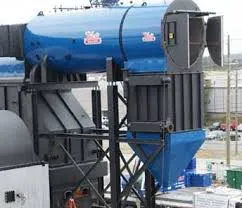- Afrikaans
- Albanian
- Amharic
- Arabic
- Armenian
- Azerbaijani
- Basque
- Belarusian
- Bengali
- Bosnian
- Bulgarian
- Catalan
- Cebuano
- China
- China (Taiwan)
- Corsican
- Croatian
- Czech
- Danish
- Dutch
- English
- Esperanto
- Estonian
- Finnish
- French
- Frisian
- Galician
- Georgian
- German
- Greek
- Gujarati
- Haitian Creole
- hausa
- hawaiian
- Hebrew
- Hindi
- Miao
- Hungarian
- Icelandic
- igbo
- Indonesian
- irish
- Italian
- Japanese
- Javanese
- Kannada
- kazakh
- Khmer
- Rwandese
- Korean
- Kurdish
- Kyrgyz
- Lao
- Latin
- Latvian
- Lithuanian
- Luxembourgish
- Macedonian
- Malgashi
- Malay
- Malayalam
- Maltese
- Maori
- Marathi
- Mongolian
- Myanmar
- Nepali
- Norwegian
- Norwegian
- Occitan
- Pashto
- Persian
- Polish
- Portuguese
- Punjabi
- Romanian
- Russian
- Samoan
- Scottish Gaelic
- Serbian
- Sesotho
- Shona
- Sindhi
- Sinhala
- Slovak
- Slovenian
- Somali
- Spanish
- Sundanese
- Swahili
- Swedish
- Tagalog
- Tajik
- Tamil
- Tatar
- Telugu
- Thai
- Turkish
- Turkmen
- Ukrainian
- Urdu
- Uighur
- Uzbek
- Vietnamese
- Welsh
- Bantu
- Yiddish
- Yoruba
- Zulu
ພ.ຈ. . 24, 2024 16:05 Back to list
Aluminum Casting Factory for Precision Parts and Custom Solutions
Aluminum Casting Factory The Heart of Innovation and Precision
Aluminum casting has emerged as a vital process in manufacturing, leveraging the lightweight and versatile properties of aluminum. An aluminum casting factory plays a crucial role in the production of components that are used in various industries, including automotive, aerospace, and consumer goods. This article explores the significance of aluminum casting factories, the modern processes involved, and the innovations that are shaping the future of this industry.
Aluminum is celebrated for its corrosion resistance, excellent thermal and electrical conductivity, and lightweight nature. These attributes make it an ideal material for a wide range of applications, particularly where weight savings are critical, such as in the automotive and aerospace industries. Aluminum casting factories specialize in transforming raw aluminum into complex geometries through various casting methods, including sand casting, die casting, and gravity casting.
The Casting Process
The casting process begins with melting aluminum ingots in a furnace. This raw material is heated to a temperature of approximately 660 degrees Celsius (1220 degrees Fahrenheit) until it becomes molten. Once the aluminum is in liquid form, it can be poured into molds to create desired shapes. The choice of casting method depends on the specific requirements of the component being produced.
1. Sand Casting This is one of the oldest and most versatile casting methods. In sand casting, a mixture of sand, clay, and water is used to create a mold. This method is particularly useful for producing large parts or for low-volume production, as it allows for intricate designs and is cost-effective.
2. Die Casting Die casting is a high-pressure casting process used to produce complex shapes with high dimensional accuracy. It involves forcing molten aluminum into steel molds at high pressure. This method is ideal for mass production and provides a smooth surface finish, reducing the need for extensive machining.
3. Gravity Casting In gravity casting, molten aluminum is poured into a mold and allowed to fill by gravity. This method is best suited for larger components and offers a good balance between cost and quality.
aluminum casting factory

Quality Control and Precision Engineering
In an aluminum casting factory, quality control is paramount. Each stage of the casting process undergoes rigorous inspection to ensure that the final products meet strict industry standards. Modern casting facilities utilize advanced technologies such as Computer Numerical Control (CNC) machining and 3D printing to produce precise molds and components.
Moreover, non-destructive testing methods, such as ultrasonic testing and X-ray inspection, are employed to identify any internal defects in the castings. This commitment to quality ensures that the components produced are not only durable but also reliable for their intended applications.
Sustainability and Future Innovations
As the world increasingly prioritizes sustainability, aluminum casting factories are also adapting to meet these demands. The recycling of aluminum is a central aspect of this industry, as it requires only about 5% of the energy needed to produce new aluminum from ore. Many factories have implemented processes to reclaim scrap aluminum, thereby reducing waste and lowering their carbon footprint.
Additionally, innovations such as lightweight casting technologies and the use of advanced alloys are paving the way for even greater efficiencies. Researchers are exploring new manufacturing techniques, such as additive manufacturing, which could revolutionize the casting industry by enabling the production of highly complex shapes that were previously impossible to create.
In conclusion, aluminum casting factories are at the forefront of manufacturing innovation, providing essential components across various industries. Through advanced casting techniques and a commitment to quality control, these facilities continue to produce high-performance parts that meet the evolving needs of modern society. With a focus on sustainability and continuous improvement, the future of aluminum casting appears bright, promising even greater advancements in the years to come. The role of these factories is not only significant in the present but also pivotal in shaping the future of manufacturing worldwide.
-
8mm Thin-Walled Cast Steel Manhole Cover Pallet Bottom Ring | Durable
NewsAug.04,2025
-
Premium Cast Iron Water Main Pipe: Durable, Corrosion-Resistant
NewsAug.03,2025
-
Durable Cast Iron Water Mains | AI-Optimized Systems
NewsAug.02,2025
-
High-Efficiency Propane Boiler for Baseboard Heat | Save Energy
NewsAug.01,2025
-
Premium Source Suppliers for Various Gray Iron Castings
NewsJul.31,2025
-
Durable Cast Iron Water Main Pipes | Long-Lasting
NewsJul.31,2025


